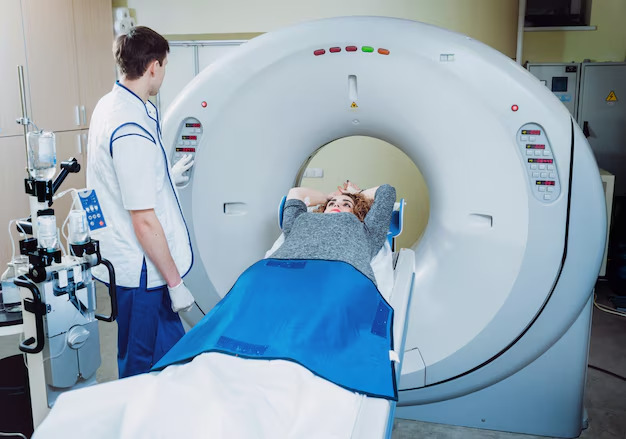Understanding the Path to a Rheumatoid Arthritis Diagnosis: A Comprehensive Guide
Rheumatoid Arthritis (RA) is a term many have heard, yet few understand the intricacies of its diagnosis process. Pinpointing such a condition involves more than acknowledging joint pain. It's about understanding the body’s signals and seeking professional guidance. This comprehensive guide sheds light on how to identify if RA might be affecting you and what to expect when pursuing a diagnosis.
🌟 Recognizing the Symptoms of Rheumatoid Arthritis
Grasping the signs of RA is the first pivotal step toward diagnosis. Rheumatoid Arthritis is an autoimmune condition, characterized by chronic inflammation, usually targeting the joints but sometimes impacting other body parts.
📝 Common Symptoms & Initial Indicators
- Persistent Joint Pain: Especially in the wrists, fingers, and knees. Pain tends to be symmetrical, affecting both sides of the body.
- Morning Stiffness: Stiffness lasting more than 30 minutes after waking up is a classic RA clue.
- Swelling & Redness: Often around the affected joints, these symptoms can indicate inflammation.
- Exhaustion & Fatigue: Feeling unusually tired or fatigued, even if well-rested.
- Low-grade Fever: Frequently mild but persistent, reflecting the body's response to inflammation.
Being attuned to these symptoms helps in early intervention, as it encourages seeking professional evaluation sooner.
🩺 The Journey to Diagnosis: Initial Steps
Understanding how healthcare professionals diagnose RA can demystify the process and empower patients.
🚶 Preparing for Your Doctor’s Visit
- Document Symptoms: Keep a journal of symptoms, noting when they occur and their intensity.
- Family History: Share any family history of RA or other autoimmune conditions with your healthcare provider.
- List of Medications: Document all current medications, including over-the-counter drugs and supplements.
Arming yourself with this information facilitates a more productive consultation with your healthcare provider.
🧑⚕️ What to Expect During the Medical Evaluation
During the initial evaluation, a doctor will often conduct:
- Physical Examination: Assessing joint swelling, redness, and range of motion.
- Medical History Review: Discussing personal and family medical history to identify potential risk factors.
Your healthcare provider will use these insights to determine if further testing is necessary.
📊 Diagnostic Tests: Shedding Light on RA
A definitive RA diagnosis combines clinical expertise and specialized tests. Let’s explore the typical tests and what they reveal.
🧪 Blood Tests
Blood tests play a crucial role in diagnosing RA:
- Rheumatoid Factor (RF): An antibody found in many, but not all, RA patients.
- Anti-Cyclic Citrullinated Peptide (anti-CCP): More specific for RA; its presence often suggests RA over other types of arthritis.
- Erythrocyte Sedimentation Rate (ESR) & C-Reactive Protein (CRP): These tests measure inflammation levels in the body, crucial for assessing RA's activity and severity.
🩻 Imaging Tests
Imaging helps visualize joint damage and assess RA’s impact:
- X-Rays: Useful for checking joint damage over time.
- Ultrasound & MRI: Provide detailed images of joint inflammation and damage, often used when initial X-rays are inconclusive.
These diagnostic tools, paired with your medical history and symptom presentation, provide a comprehensive picture for your doctor to evaluate.
🤝 Working with Specialists: The Role of Rheumatologists
Rheumatologists specialize in autoimmune conditions, including RA. They bring expertise that complements standard medical evaluations.
👨⚕️ Why See a Rheumatologist?
- Expert Assessment: They are adept at differentiating RA from other types of arthritis.
- Advanced Management: Rheumatologists offer specialized treatment plans, including the latest therapies and management techniques.
Working with a rheumatologist ensures a nuanced approach, ensuring tailored treatment and monitoring.
🗝️ Living with RA: Post-Diagnosis Essentials
Once diagnosed, understanding RA involves lifestyle adjustments and educational empowerment.
🎯 Developing a Management Plan
- Medication Management: Your doctor may prescribe medications to manage pain and slow disease progression.
- Physical Therapy: Engaging in exercises designed to improve joint function and flexibility.
- Lifestyle Modifications: Adopting anti-inflammatory diets, stress management, and regular exercise.
Empowering yourself with knowledge about lifestyle changes fosters a proactive approach to living with RA.
📚 Education and Support Resources
Connecting with educational and support resources can be invaluable:
- Join Support Groups: Both online and offline groups provide emotional support and shared experiences.
- Educational Workshops: Participating in workshops helps you stay informed about the latest RA management strategies.
These resources ensure you’re not alone and provide helpful strategies to navigate life with RA effectively.
📋 Quick Reference Summary: Your RA Diagnostic Guide
Here's a concise overview to streamline your journey:
- Observe Symptoms: Note consistent joint pain, especially symmetrical morning stiffness.
- Prepare for Medical Consultations: Document symptoms, prepare medical history, and current medications.
- Undergo Testing: Blood tests like RF and anti-CCP, alongside imaging tests, are crucial.
- Seek Specialist Care: A rheumatologist is central to a detailed evaluation and tailored treatment.
- Adopt a Holistic Approach: Medication, lifestyle changes, physical therapy, and ongoing education are keys to managing RA.
Empower your journey through RA diagnosis and beyond, be informed, and engage proactively with healthcare providers to optimize your health journey.
Closing Insight
Navigating a Rheumatoid Arthritis diagnosis is a path filled with challenges yet enriched by the clarity of informed decisions. Being aware of the symptoms, preparing thoroughly for healthcare encounters, understanding diagnostic procedures, and embracing holistic management are cornerstone strategies in managing RA effectively. Recognize the power of knowledge in health management, and ensure your insights guide you through this journey with confidence and clarity.

Related Topics
- a Septic Arthritis
- Are Bananas Bad For Arthritis
- Are Tomatoes Bad For Arthritis
- Can An Inflamed Nerve Cause Arthritis
- Can An Inflamed Nerve Cause Arthritis In Dogs
- Can An x Ray Show Arthritis
- Can Arthritis Be Cured
- Can Arthritis Be Reversed
- Can Arthritis Become Septic After Infection From Injection
- Can Arthritis Cause Numbness